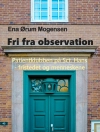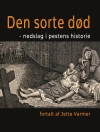Over the course of the fourth century, Christianity rose from a religion actively persecuted by the authority of the Roman empire to become the religion of state—a feat largely credited to Constantine the Great. Constantine succeeded in propelling this minority religion to imperial status using the traditional tools of governance, yet his proclamation of his new religious orientation was by no means unambiguous. His coins and inscriptions, public monuments, and pronouncements sent unmistakable signals to his non-Christian subjects that he was willing not only to accept their beliefs about the nature of the divine but also to incorporate traditional forms of religious expression into his own self-presentation. In Constantine and the Cities, Noel Lenski attempts to reconcile these apparent contradictions by examining the dialogic nature of Constantine’s power and how his rule was built in the space between his ambitions for the empire and his subjects’ efforts to further their own understandings of religious truth.
Focusing on cities and the texts and images produced by their citizens for and about the emperor, Constantine and the Cities uncovers the interplay of signals between ruler and subject, mapping out the terrain within which Constantine nudged his subjects in the direction of conversion. Reading inscriptions, coins, legal texts, letters, orations, and histories, Lenski demonstrates how Constantine and his subjects used the instruments of government in a struggle for authority over the religion of the empire.
Tabla de materias
List of Maps
Introduction. Many Faces of Constantine
PART I. CONSTANTINE’S SELF-PRESENTATION
Chapter 1. Constantine Develops
Chapter 2. Constantinian Constants
Chapter 3. Constantine and the Christians: Controlling the Message
PART II. THE POWER OF PETITIONS
Chapter 4. Approaching Constantine: The Orcistus Dossier
Chapter 5. The Exigencies of Dialogue: Hispellum
Chapter 6. Constantine’s Cities in the West: Nomen Venerandum
Chapter 7. Constantine’s Cities in the East: Peer Polity Interaction
PART III. RECONSTRUCTING THE ANCIENT CITY
Chapter 8. Redistributing Wealth
Chapter 9. Building Churches
Chapter 10. Empowering Bishops
PART IV. ALTERNATIVE RESPONSES TO CONSTANTINE
Chapter 11. Engaging Cities
Chapter 12. Resisting Cities
Chapter 13. Opposing Christians: Donatists and Caecilianists
Chapter 14. Complex Cities: Antioch and Alexandria
Epilogue
List of Sigla and Abbreviations
Notes
Bibliography
Index
Acknowledgments
Sobre el autor
Noel Lenski is Professor of Classics and History at Yale University. He is author of Failure of Empire: Valens and the Roman State in the Fourth Century A.D. and coauthor of The Romans: From Village to Empire and A Brief History of the Romans.












